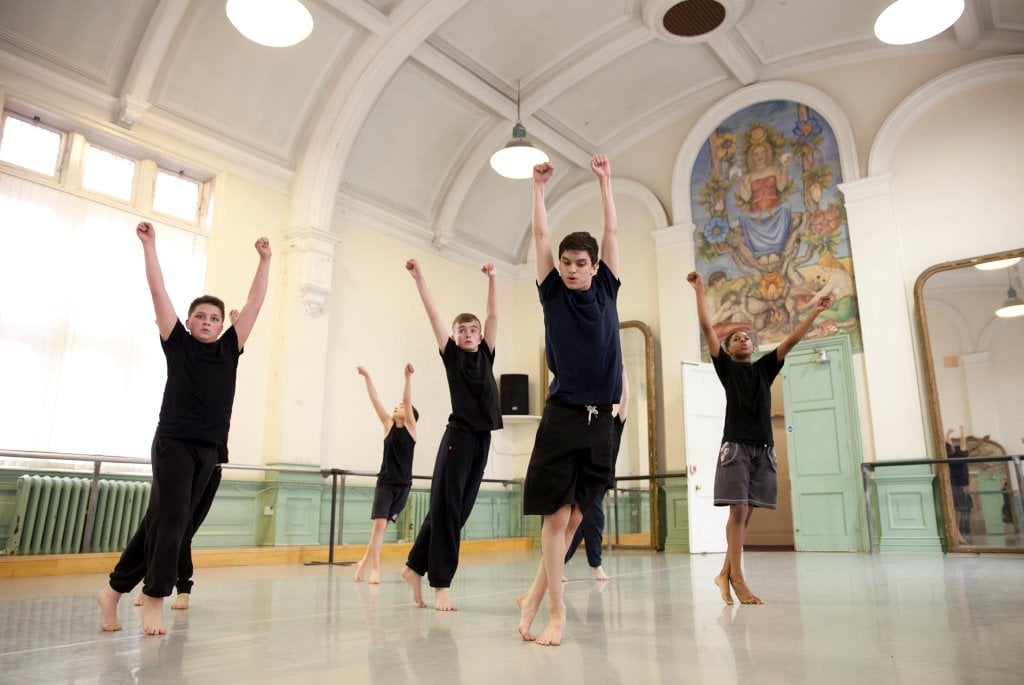
Boys will be boys
Photo: Rachel Cherry
How to… get boys dancing
How do you get a room full of sniggering teenage boys enthusiastic about dance? Helen Ganberg says it’s not easy, but experience shows it is possible.
Monday morning, 9am. “So today we are going to do dance,” I say enthusiastically. Looking around, the school gym is filled with year ten boys in their PE kits. Their faces and their sniggering say it all – this is going to be an uphill struggle.
School teachers and dance leaders all over the country will recognise this facedown moment. Your first time enthusiasm plus their inhibitions and maybe even fear equals a rocky road and a winding path to the dancefloor.
“Only some of my friends know I dance, I’d get bullied otherwise”
Oscar, age 8
But in the past ten to fifteen years, dance has crashed into mainstream. Strictly Come Dancing, Billy Elliot, the Step Up movies and the explosion of social media are all helping to spread and inspire a new generation of males who no longer automatically perceive a stigma around dance being ‘just for girls’.
In many ways we at Swindon Dance are challenging society to question what is and what is not masculine, and ‘we’ do it (often invisibly) in schools, church halls, community centres and dance studios all around the country. As a development sector our job is to make dance for boys visible, physical, challenging, creative, enjoyable and most of all accessible and inspiring. We need to gently persuade boys, their parents and friends that dance is for boys and does not threaten their gender in any way – conversely, it celebrates it.
There is no doubt that inspiring boys and young men to dance can be extremely challenging. Our learning has evolved through practice, projects and a lot of listening to those we are trying to reach. We’ve run regular boys-only classes and youth groups, as well as talks, workshops, performance projects and schools outreach programmes.
We have found that boys:
- Like to have a visual sense of what they will do in the dance class. A well-chosen piece of film or set of photos will give them a real sense of this and will prompt some ‘managed’ discussion.
- Need to see positive and inspiring male role models who are physically athletic, ‘cool’ and highly skilled – similar to that of an elite sports man (or woman for that matter!)
- Thrive in a single gender dance group. This is not the only way of making groups work, but it can be a positive and safe environment which celebrates a union of masculinity
- Enjoy carefully chosen theme selections, music and dance styles. Including boys in these discussions forges ownership and will help provide some insight into their preferences, interests and issues. Urban dance styles and Brazilian fighting dance Capoeira are generally a winner, as are physical theatre and contact work.
- Respond to positive images of men dancing. Display great photos around your space or building.
Sadly, some will still fall by the wayside due to teasing and ridicule from peers and even family. Last year we encountered a seven-year-old boy who had been selected by our partner The Royal Ballet School Primary Steps programme to take part in a special dance opportunity. His father’s response was: “No boy of mine is gonna do ballet.” For all his talents, that young man did not take part. We are fighting a war of prejudice on all levels.
Helen Ganberg is Education and Development Manager at Swindon Dance.
www.swindondance.org.uk
Join the Discussion
You must be logged in to post a comment.